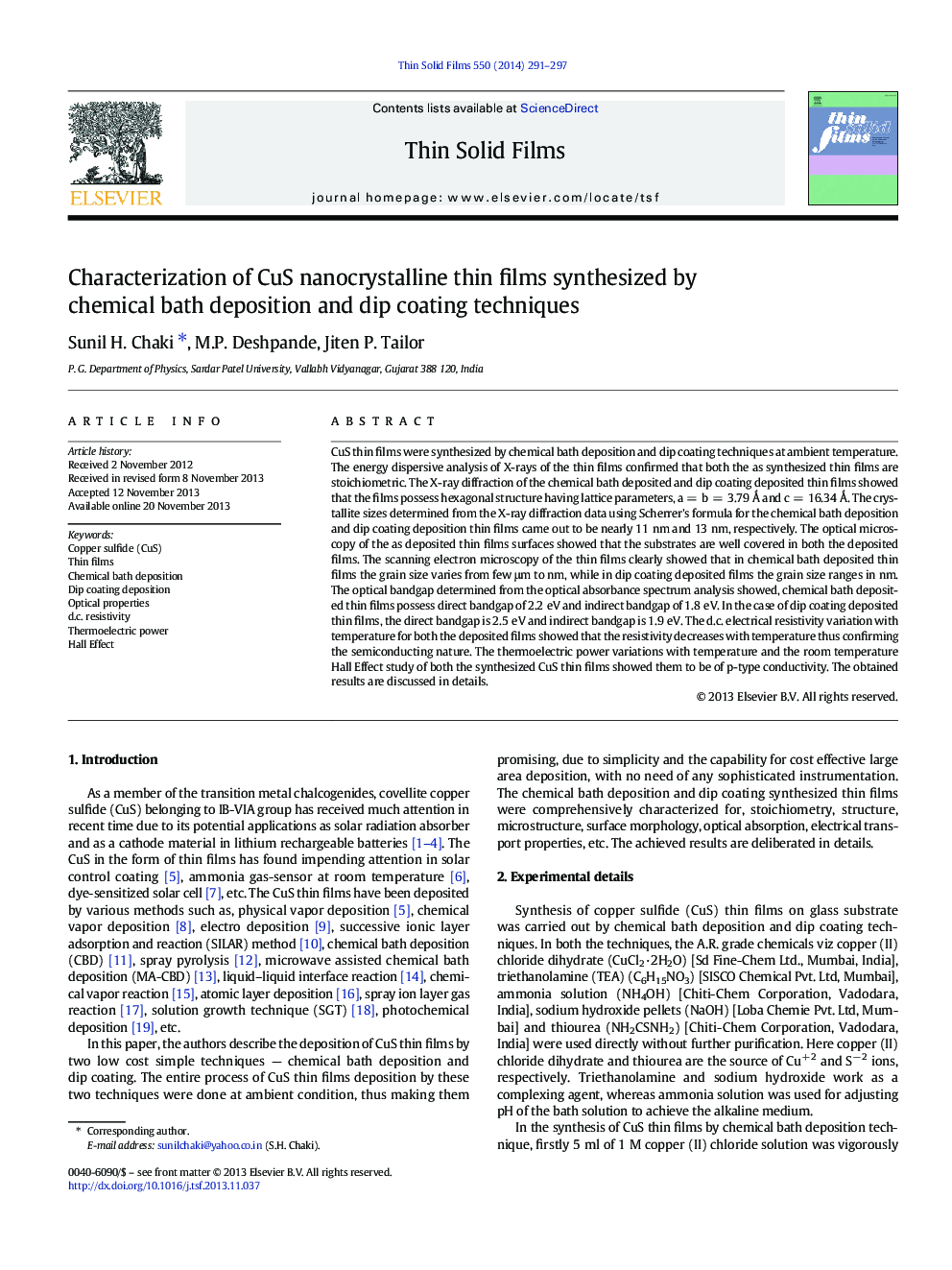| Article ID | Journal | Published Year | Pages | File Type |
|---|---|---|---|---|
| 8035507 | Thin Solid Films | 2014 | 7 Pages |
Abstract
CuS thin films were synthesized by chemical bath deposition and dip coating techniques at ambient temperature. The energy dispersive analysis of X-rays of the thin films confirmed that both the as synthesized thin films are stoichiometric. The X-ray diffraction of the chemical bath deposited and dip coating deposited thin films showed that the films possess hexagonal structure having lattice parameters, a = b = 3.79 Ǻ and c = 16.34 Ǻ. The crystallite sizes determined from the X-ray diffraction data using Scherrer's formula for the chemical bath deposition and dip coating deposition thin films came out to be nearly 11 nm and 13 nm, respectively. The optical microscopy of the as deposited thin films surfaces showed that the substrates are well covered in both the deposited films. The scanning electron microscopy of the thin films clearly showed that in chemical bath deposited thin films the grain size varies from few μm to nm, while in dip coating deposited films the grain size ranges in nm. The optical bandgap determined from the optical absorbance spectrum analysis showed, chemical bath deposited thin films possess direct bandgap of 2.2 eV and indirect bandgap of 1.8 eV. In the case of dip coating deposited thin films, the direct bandgap is 2.5 eV and indirect bandgap is 1.9 eV. The d.c. electrical resistivity variation with temperature for both the deposited films showed that the resistivity decreases with temperature thus confirming the semiconducting nature. The thermoelectric power variations with temperature and the room temperature Hall Effect study of both the synthesized CuS thin films showed them to be of p-type conductivity. The obtained results are discussed in details.
Keywords
Related Topics
Physical Sciences and Engineering
Materials Science
Nanotechnology
Authors
Sunil H. Chaki, M.P. Deshpande, Jiten P. Tailor,
